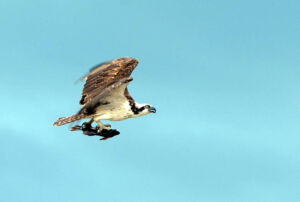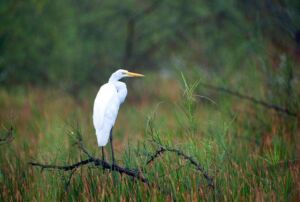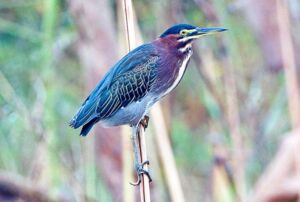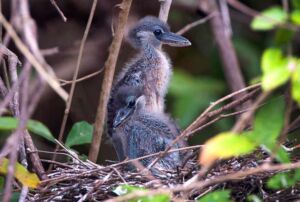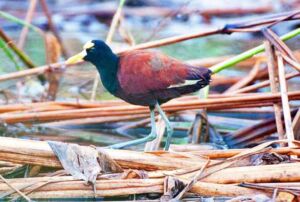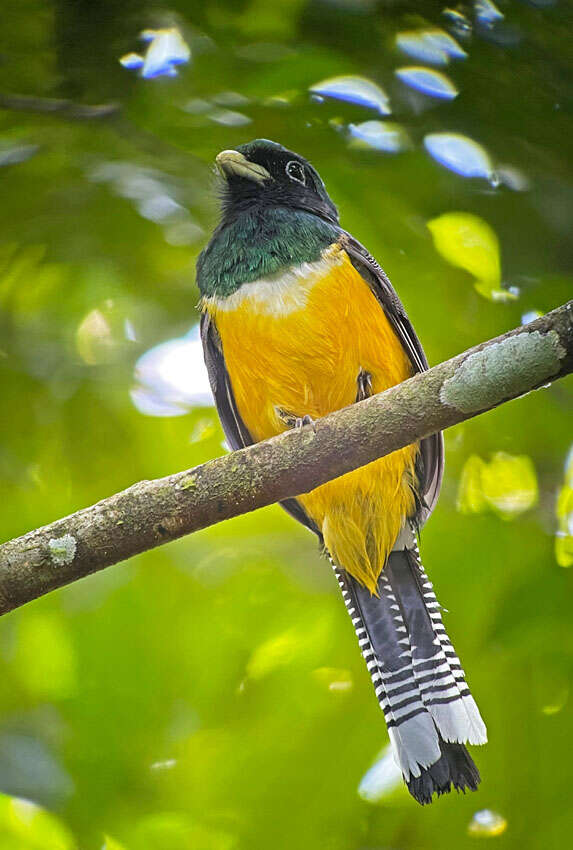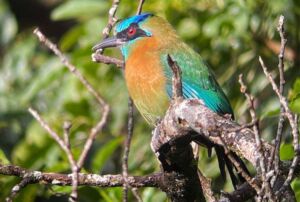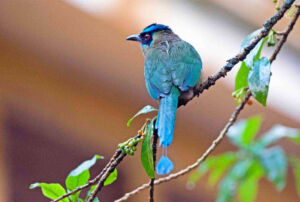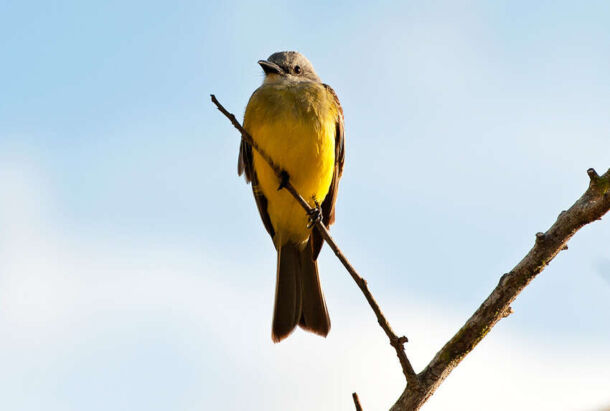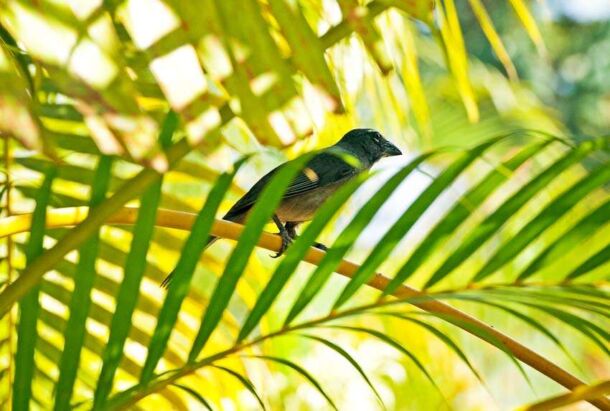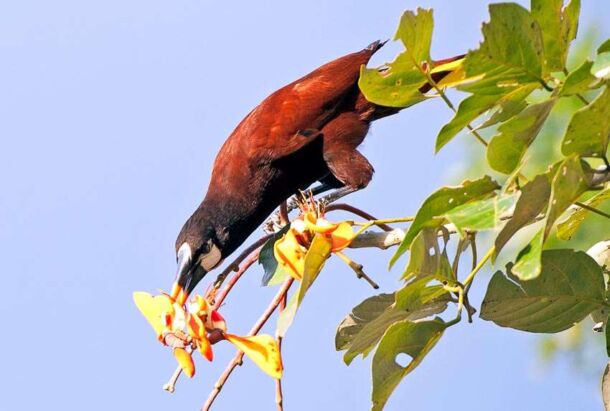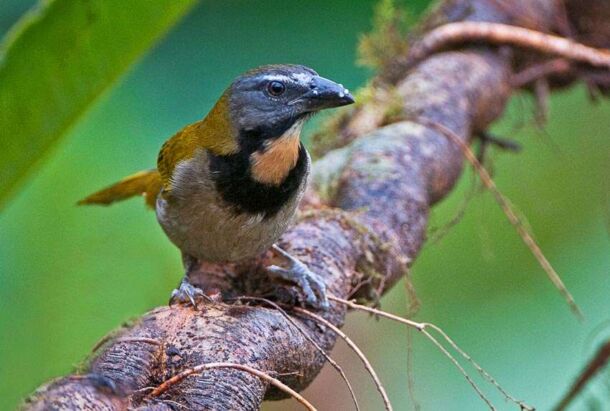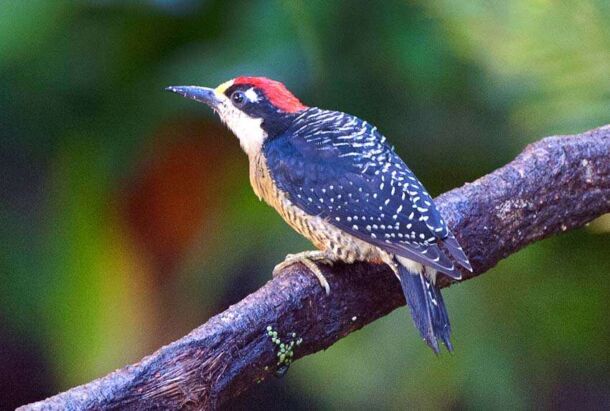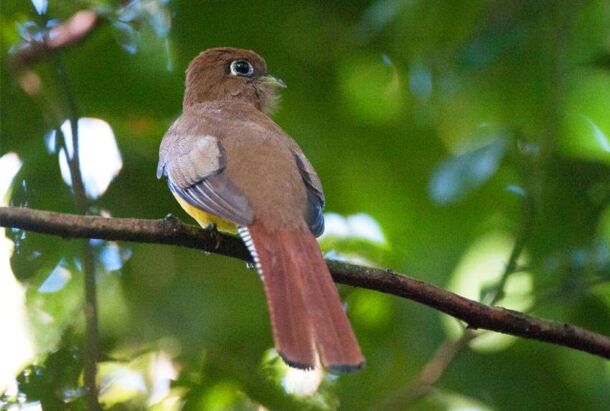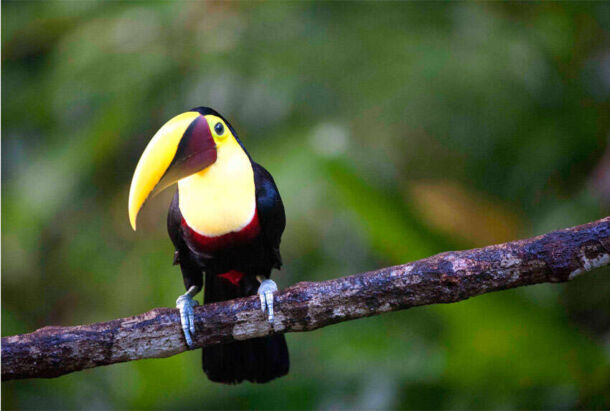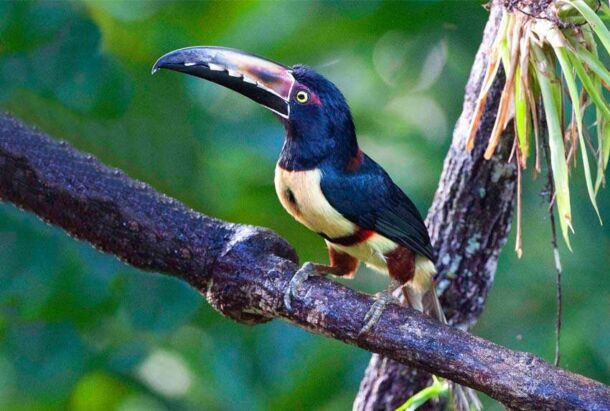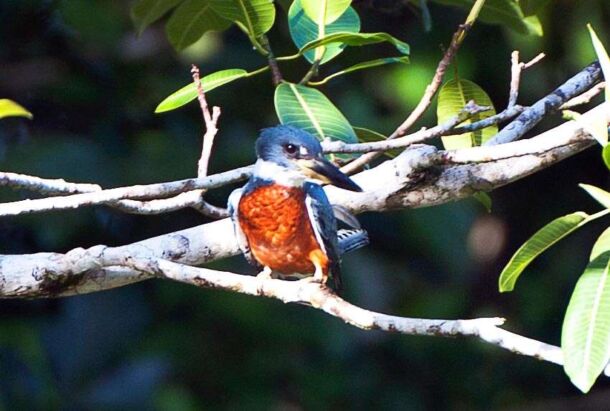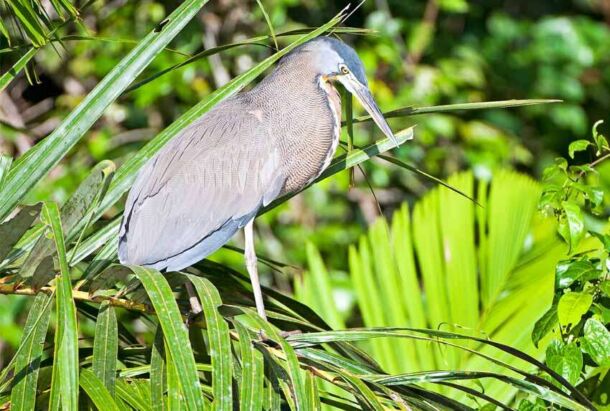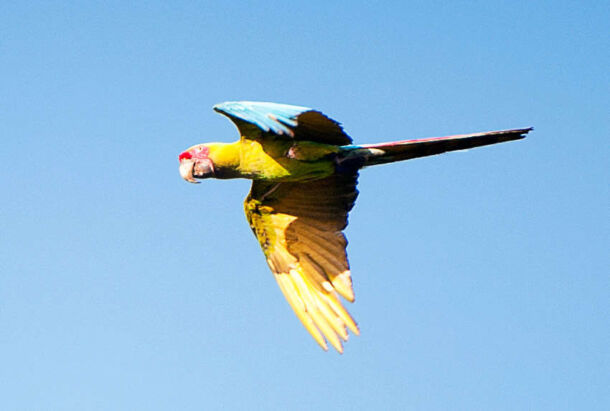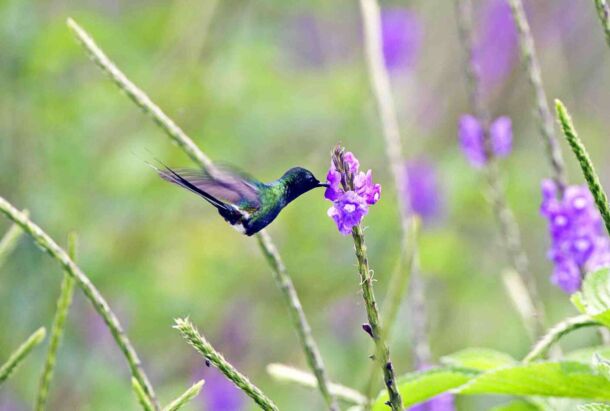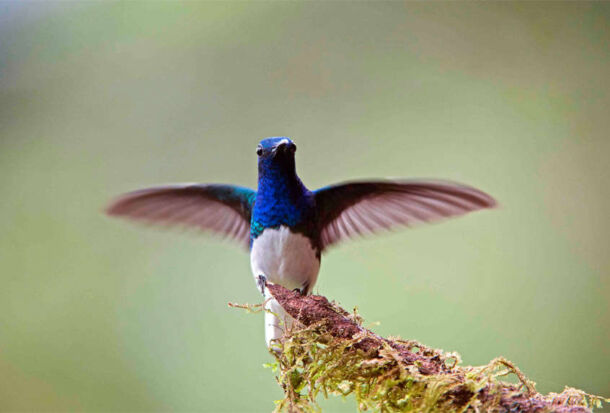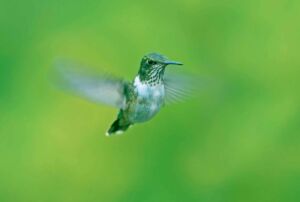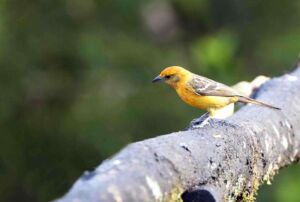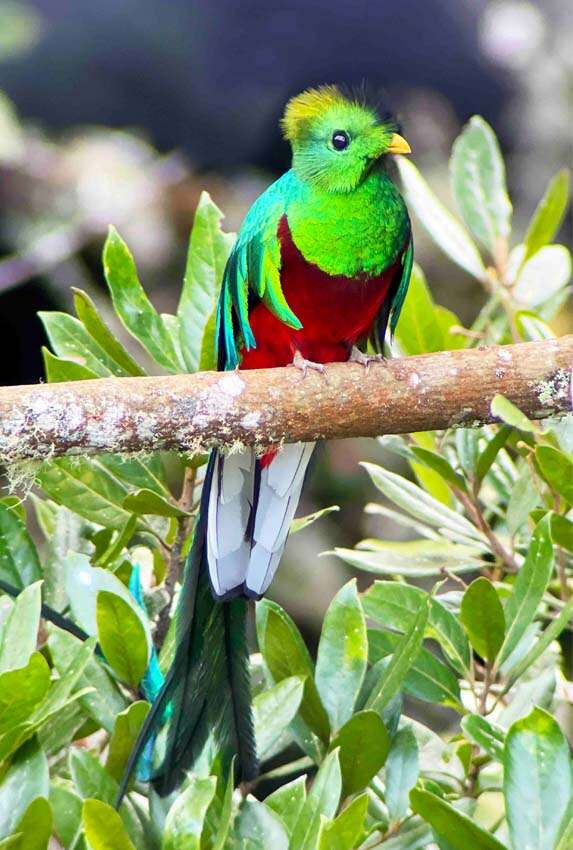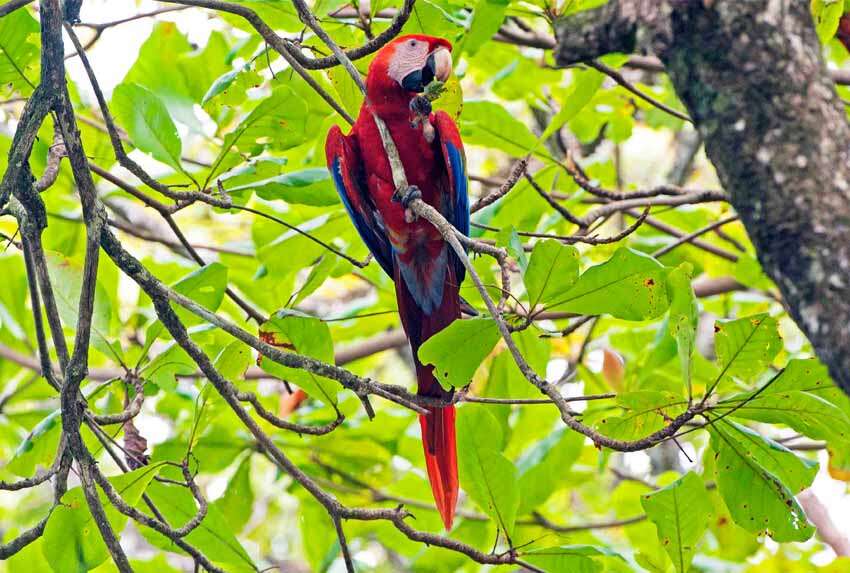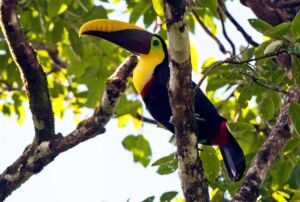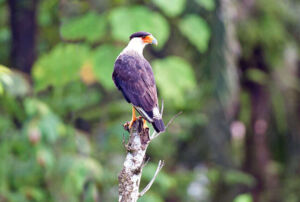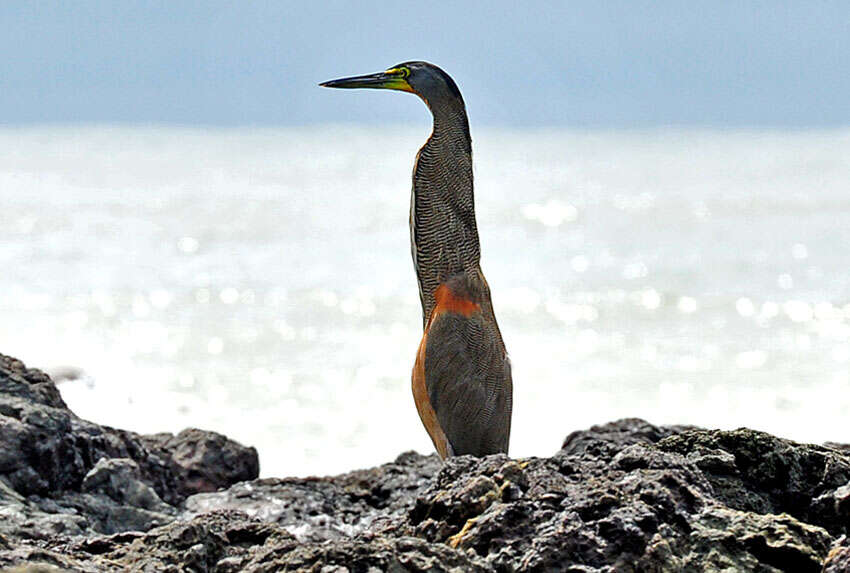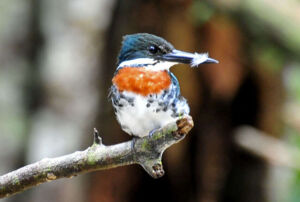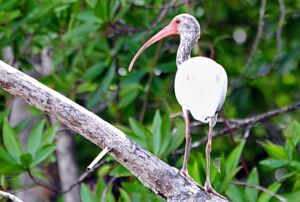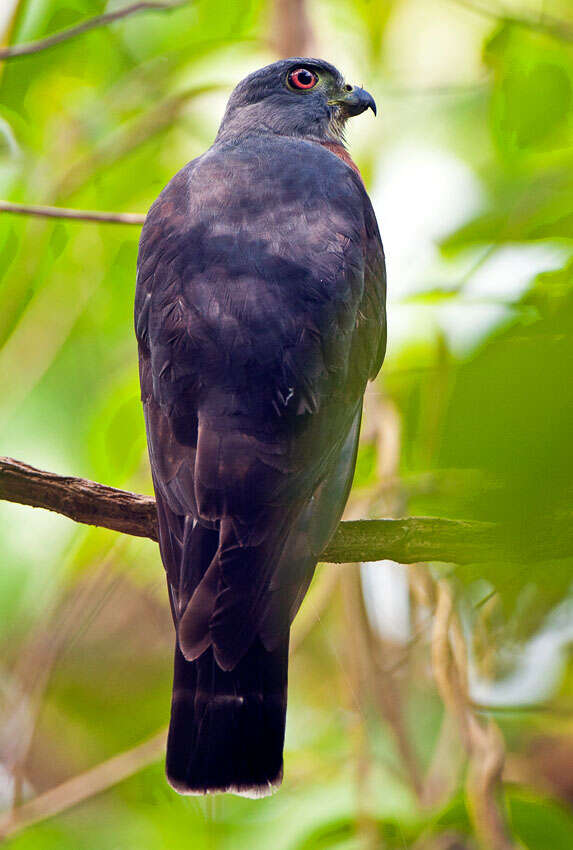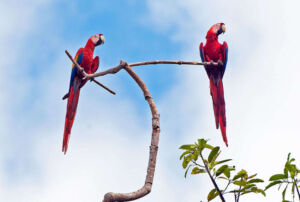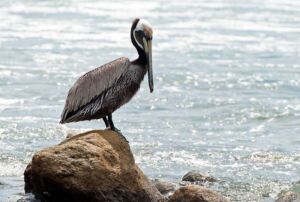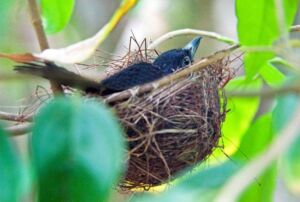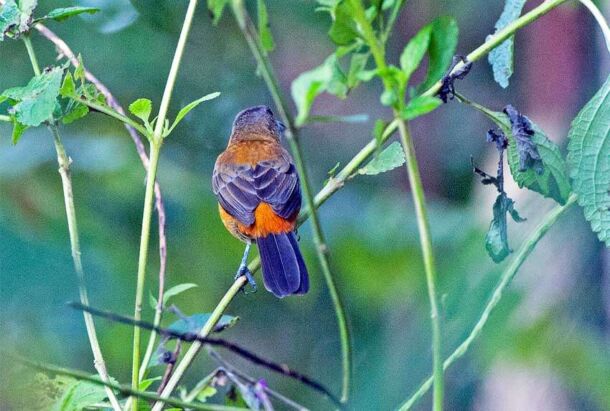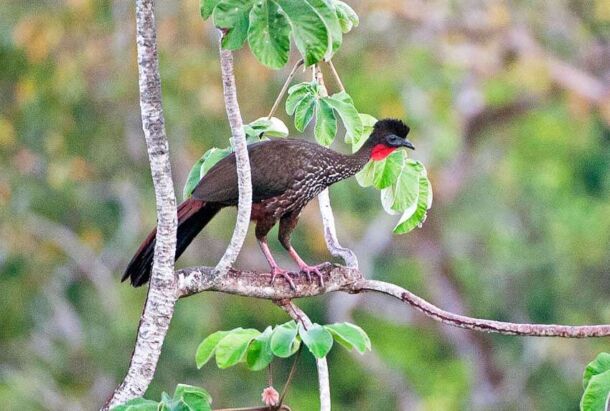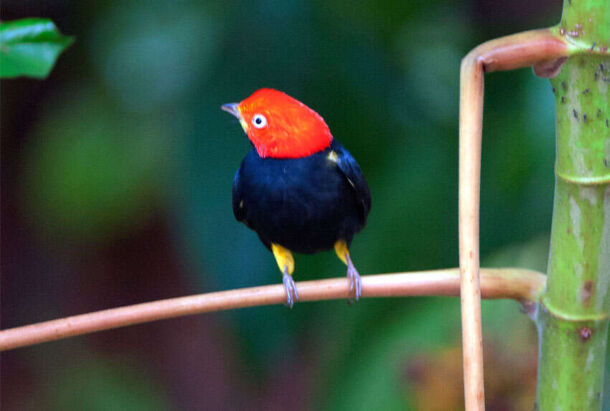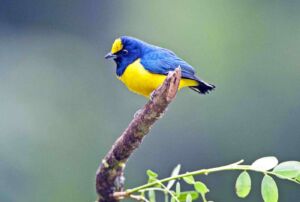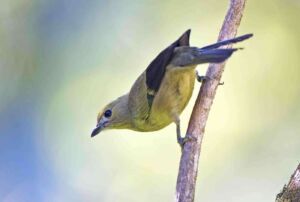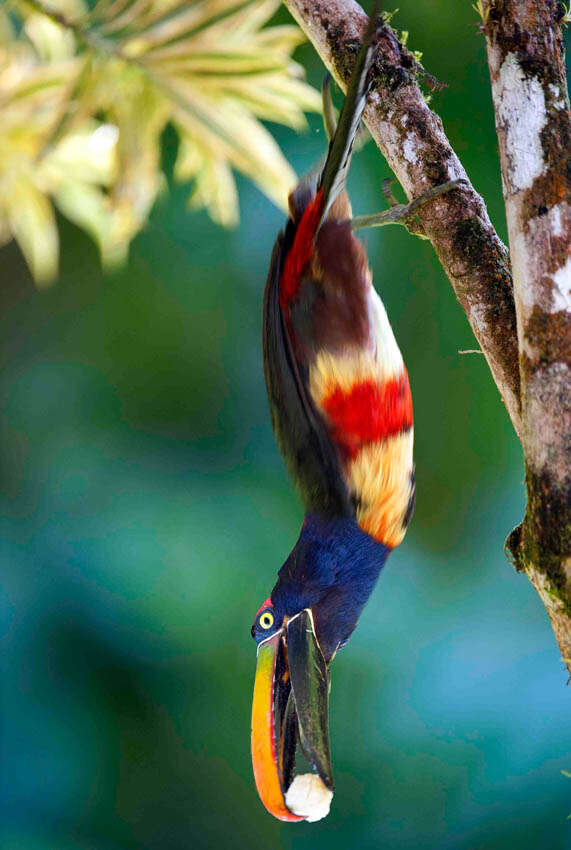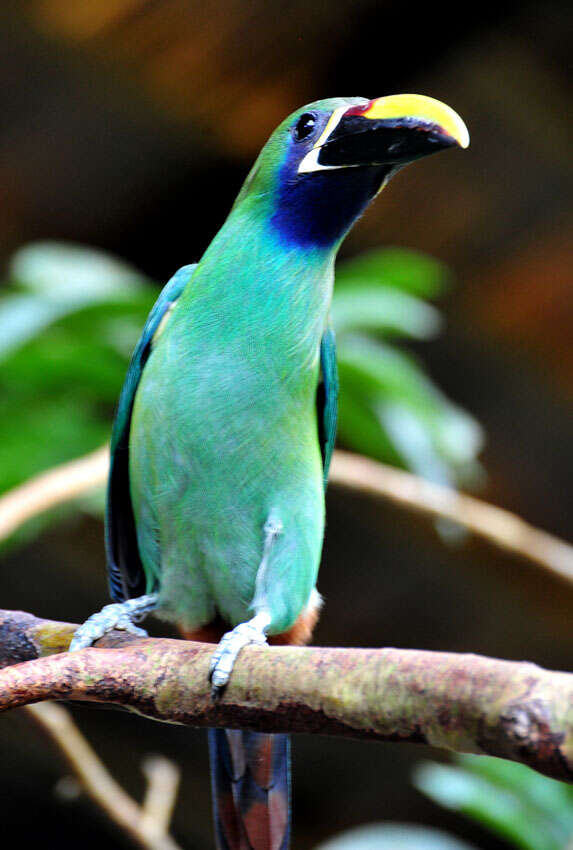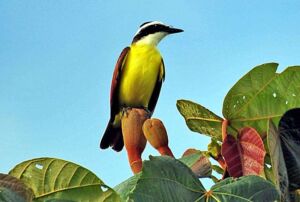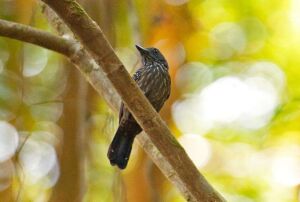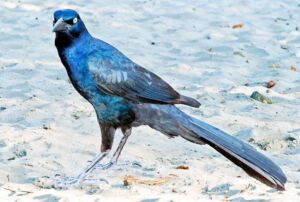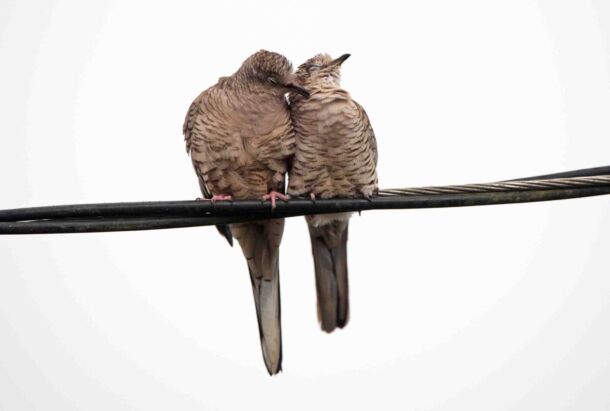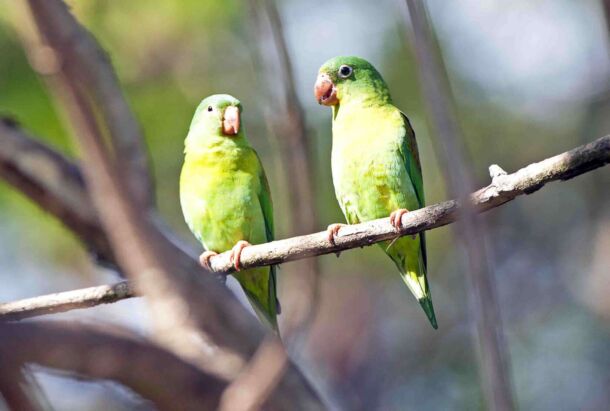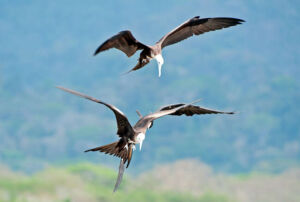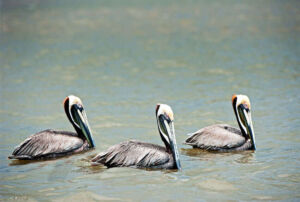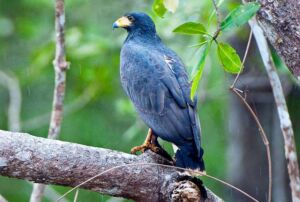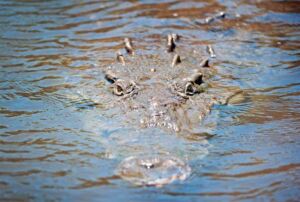Migrating birds from two hemispheres meet the endemic residents in the middle – in incomparable Costa Rica.
Perhaps nowhere else on earth offers you a better opportunity to see birds from both hemispheres in one place. Depending on the time of year that you travel you’ll be immersed in a kaleidoscope of plumage – not only from the colourful endemic species but also by the visitors from each continent – either the North or South Amercicas.
We’ve headed to Costa Rica in both March and November – clear weather and blue skies in March and at the tail end of the rainy season in November before it gets too hot or too crowded.
Over the course of our two weeks in the country each time we travel from north to south, east to west, staying in some of the best birding locations and seeing some of the most colourful and spectacular birdlife.
Being avid birdwatchers but also keen photographers, its no longer enought just to spot a new species but ideally to photograph it during distinctive behaviour. We think its important to spend whatever time necessary to achieve this and as a result always use our own private driver/guide and specialist guides at each location with local knowledge. This is surprisingly cost effective and not anywhere near as expensive as you’d think – and it ensures that we’re not part of a crowd following and trying to listen to a guide, whilst jockeying for position with a bunch of others in order to see or photograph what’s being described.
The tours we run through our sister business TLC World, ensure that our tailor-made holidays cater for exactly what you want out of your birdwatching trip – if you want companions that’s fine but it should be your choice, not an imposition.
Anyway, we wanted to cover as many different habitats as possible to stand the chance of seeing as diverse a spectrum of species as possible and to better understand the opportunities for travellers. We always endeavour to arrange holidays based on personal experience of every location.
Well, here’s our whistle stop review of where we went and what we saw.
Puerto Humo & Palo Verde National Park
We’ll start out in Puerto Humo, which is in the north and predominantly wetlands habitat.

Puerto Humo, wetlands landscape, Nicoya Peninsula
As you’d expect at the end of the rains in November, the area was pretty waterlogged, so its necessary to use 4×4 or boat transport to get around the wetland areas. We saw a fair collection of smaller birdlife from the ubiquitous Green Heron and Black Vultures, Anhinga and Northern Jacana, through to Great Kiskadee and a prolonged sighting of an Osprey catching a Tilapia fish on the Tempisque River and flying to a treetop to devour it.
Its a bit of a hike to get there but if you want to get away from it all then Puerto Humo is somewhere you’ll very much have the place to yourself.
Monteverde
Now, everyone raves about Monteverde and its cloud forest; which is probably why we think its overcrowded and overdone in terms of tourism and the impact of people on the local environment. True, you’ll see a plethora of birdlife but there are other places (such as San Gerardo de Dota) that are much better managed, less crowded and with as much birdlife, including the elusive Quetzal.

Monteverde cloud forest panorama on a good day
Its always been a must-see location for birdlife but we’d urge you to think twice, rather than be disappointed by the ever-expanding infrastructure of high-end tourist hotels that ramps up cost without the benefit of an exclusive viewing experience.
Our own viewing experience was marred by the large numbers of people in the Reserve area, even though off-season but we did nevertheless see a fair cross section of bird and wildlife, including many reptiles and Koati.
Arenal
Arenal benefits from some superb scenery, not least of which is the imposing volcano, now thankfully largely inactive but also the fascinating Hanging Bridges forest that offers you the unique perspective of treetop viewing from the many suspension bridges that traverse the forest canopy.

It’s why it’s called ‘Hanging Bridges’ share the treetops with the birds
We’d reached Arenal by boat across the lake from Monteverde and this itself offered the chance to see Kingfishers and other aquatic environement birds in their native habitats
We were as fascinated by clear sightings of Sloth in the forest, as we were by the birdlife which is prolific throughout the area and well worth the visit. After a hard day of hiking around the trails you can always luxuriate in one of the natural hot springs that abound in Arenal and its town La Fortuna. The hotels here vary in standard across all price ranges from budget to luxury but some of them have beautiful grounds that with their complement of birdlife make it almost unecessary to leave for the forest.
Sarapiqui – La Selva Biological Station
Although we stayed in Selva Verde Lodge, which as you can see sits on stilts and elevated walkways through verdant foliage, we spent the greater part of our time at La Selva Biological Research Station.

Selva Verde Lodge elevated walkways through lush forest
Here, your mere presence contributes to the environmental research they underake and their guides are fantastic at spotting and explaining the local birdlife to you. Both places are well worth the visit and the many trails within the Biological Station unearth all sorts of bird and wildlife
An early start is always to be advised with any birdspotting but at La Selva Verde they take the trouble to distribute fresh fruit on branches adjacent to the restaurant, so your breakfast is accompanied by some very colourful companions.
You might question this practice but the birds are not given anything unseasonal or that they would not find in the wild – and it does provide some exceptional viewing.
Tortuguero
Set just inland from a long barrier island, or sandbar, on the Caribbean coast this lush tropical rainforest is a maze of freshwater canals, wetlands and forests. Tortuguero National Park is interlaced with a network of canals and rivers abundant with wildlife and birdlife that will enthrall you as you cruise the waters in small craft with your expert guide. Whether you arrive by aircraft or road vehicle you’ll inevitably transfer to a boat for the short jouney to your chosen lodge.

Whether in your own private boat or with a small group you can’t fail to be enchanted by the Tortuguero canals
Your immediate lodge surroundings will provide endless entertainent in terms of sightings but once you get into your boat for a morning or evening meander through the canals you’ll soon lose yourself in the magical ambiance of the park.
This is a unique environment and not to be missed in your birdwatching tour of Costa Rica. The setting alone is enough to make it worthwhile, much less the bird and wildlife you’ll see.
Turrialba – Rancho Naturalista
We have mentioned a couple of the lodges that we have stayed in, along with the destination, where we feel that an outstanding viewing experience was considerably enhanced by the location in which we stopped. Rancho Naturalista is one such place.

The sweeping landscapes around and within Rancho Naturalista abound with birdlife
The lodge is run by the lady owner who puts a good deal of effort into both comfort and catering. The main lodge itself has a large balcony that overlooks extensive views of the landscape and various feeders and fruit supplies ensure a constant presence of hummingbirds and other colourful birdlife.
There’s a very personal ‘homestay’ feel to our time here and the walk around the property and surrounding landscape very rewarding in terms of sightings.
San Gerardo de Dota
This is one of our favourites. Not only because you’re practically guaranteed to fulfill your quest for the elusive Quetzal but because it’s remote, not overcrowded and very picturesque. Its a lovely place to spend a few days, with plenty of trails to keep you interested and an abundance of birdlife in close proximity.

The rolling landscape of San Gerardo de Dota reached after a steep descent through the mountains
There are a couple of very nicely appointed lodges along the narrow mountain road as well as the more established resort of Savegre Lodge, which has its own nature trails through the rainforest, as well as a lovely location by the Savegre River and a great deal of birdlife attracted by the fruit that is left out for them in a cottage garden.
We think that this location has to be on the wishlist of every serious birder.
Punta Banco
We’re now in the extreme southwest of Costa Rica on the wild Pacific Coast close to the border with Panama. You might debate the value of a long transfer to get here, especally as the last couple of hours is by 4×4 over a very broken surface but the views and isolation of this part of the world more than make up for it.

A welcome break from the bumping of the 4×4 to take in the view of Pavon Bay and the Osa Peninsula
We’re staying in Tiskita Lodge, perched on a hilltop with views of the Pacific, this quirky lodge and its individual private bungalows is as much dedicated to vegetarian and Ayurvedic escapes as it is to birdlife but with Macaws fighting in the treetops, hawks and vultures cruising the coastline and birds flitting around this ‘hobby farm’ setting, then you’ll find plenty to have justifed the trek here.
There are plenty of trails around the area as well as strolls along the beach and coastal roads that will present many bird spotting opportunities.
Corcovado National Park, Osa Peninsula

Although much of the birdlife will be found in the forest fringes, the beach provides the chance for spotting hawks and flocks of Pelicans
On the other side of the bay from Punta Banco lies Corcovado National Park and another great opportunity for birdwatching in this verdant rainforest area. We’ve stayed at different times in two distinctly different places, both with their own merits and suiting differing budgets.
Luna Lodge is a high-end lodge with individual wooden bungalows set on a hilltop with sweeping views of the landscape. Reached by 4×4 over a rocky dried riverbed and thereafter into the hills, Luna Lodge is run by an engagingly eccentric lady who is keen to be welcoming and hospitable. Most of the birding walks are along the forest fringed coastline, where you’ll spot nesting birds amidst the trailside bushes.
We’ve also stayed at Casa Corcovado, which although still pricey is a little more reasonable. Reached by boat, including a hairy run ashore through the rocks and coastal breakers, Casa Corcovado is also perched on a hilltop and the more basic individual bungalows are set around a campus from where you can spot a plethora of wildlife before venturing down to the coastline again – keeping clear of the crocodiles who idle around the river mouth!
This is one of the wilder areas of Costa Rica and very much worth the time to get away from the madding crowd.
Uvita
Slightly further north along the Pacific Cast you’ll find the Parque Nacional Marino Ballena at Uvita, where we stayed at Cusingha Lodge, perched above the coastline and with access to the National Park beach just below and views of the iconic Ballena Tail coastal feature.

Although the ‘Whale Tail’ is out of sight to the right, the rainforest and coastal setting at Uvita is truly dramatic
Closeby is also Esquinas Rainforest Lodge – without the views but in a verdant valley with more of a community feel to the attractive cluster of log cabins and walks areound the local area.
An early morning walk around the local area will reward the keen birder with some beautifully vibrant and colourful plumage.
Savegre River – Rafiki Safari Lodge
This is another of our persoanl favourites. Although reached through seemingly endless palm oil plantations, Rafiki Safari Lodge is in a remote part of the Savegre River valley and the owner couldn’t be more supportive of local crafts, skills and the people themselves who he employs as staff and guides. Modelled on African safari lodges, the luxury tented accommodation you’ll stay in is set within luscious woodland with a waterfall nearby and birds filling the air around you.

Great view of the Savegre River valley from the viewing deck of Rafiki Safari Lodge
The lodge itself is a wooden structure on stilts that overlooks the Savegre Valley and with carefully placed feeding stations for birdlife you can while away hours just watching the fantastic range of species who come to visit.
Whilst Rafiki has a wonderful atmosphere all of its own, its the environemental sensitivity and contribution that really wins it for us; as they don’t just make the right noises about doing the right thing but are actively supporting conservation, wildlife and local people.
Manuel Antonio
Now we go from one extreme to the other. Renowned the world over as one of the go-to destinations for bird and wildlife in Costa Rica, we choose now to give it a wide berth.

Undoubtedly picturesque, with extensive beaches and rainforest, its this very fact that for us means it’s played out and overcrowded. We believe that there are far more attractive and well stocked locations in Costa Rica, not to have to endure crowds, queues and noise.
Unless our clients are hell-bent on seeing Manuel Antonio we now prefer to send them to more tranquil and enjoyable places.
Santa Juana Reserve
This place is as remarkable for its location on a mountain top as it is for the varied birdlife it offers.

Santa Juana hinterland of cloud forest that is home to hummingbirds in the heights and Red-capped Woodpeckers in the river valley that runs to Quepos
We’re staying in Santa Juana Lodge, which is a collection of bungalows scattered around a central dining area where local food is prepared. Our own bungalow is just off the premises and set alone on a hillside and as you can see above, with beautiful views of the surrounding cloud forest.
Although we venture back down the valley to see riverine birdlife, we’d have been as happy to walk the local trails or sit on our balcony and watch visiting hummingbirds and the mating Black vultures in the nearby treetops.
Carara National Park
For many, the River Tarcoles is crossed en route to somewhere else in Costa Rica and often a brief stop to view the enormous crocodiles who bask in the shallow waters. However, there are some quite acceptable, if not luxurious, lodges closeby if you’ve a mind to spend time cruising on the river in search of river dwelling birds whilst keeping a weather eye on the crocodiles that swim alongside.
Not necessarily a place to spend too long but a night here could be rewarding
Conclusion
In our opinion you don’t visit Costa Rica for the cuisine (unless you love refried beans and rice) or the culture (if there’s ever a hint of a building being listed for historic importance the locals knock it down to avoid the onerous maintenance conditons and costs) but do everything you can, if you’re an avid birder to beat your way here as quickly as possible.

It offers such a stunning array of birdlife from two continents, as well as its own indigenous species that we think its hard to beat anywhere else on the planet.
If you can travel during the season that BA flies direct to San Jose (around November to April) it’s considerably easier than a stopover in Miami, Houston or somewhere in Canada!
Costa Rica offers a cross section of accommodation and whilst not cheap, neverthelss offers a standard thats hard to beat in other countries.
If you’re keen on birdlife then you simply have to visit Costa Rica.
Why not call us today?

 Let us help you take wing to Costa Rica and Central & S. America
Let us help you take wing to Costa Rica and Central & S. America
Why not download the TLC World guide brochure or give us a call today on 01202 030443, or simply click ‘enquire’ to submit your own personal itinerary request

